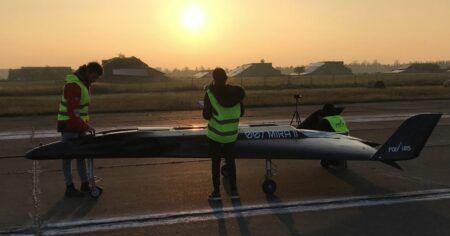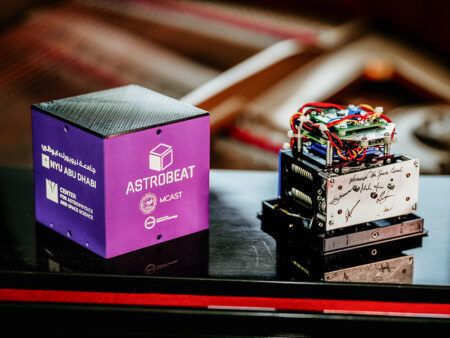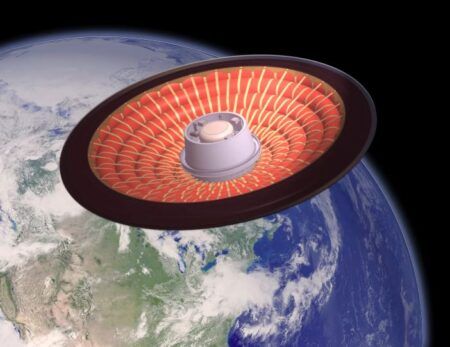Engineers at NASA’s Langley Research Center in Hampton, Virginia, USA, are preparing to mimic various mission finale scenarios this year by dropping a mock-up of Orion with test dummies installed in the crew suits. The capsule, coupled with the heat shield from the spacecraft’s first flight, will be used for water-impact testing to simulate what astronauts would experience when landing in the Pacific Ocean during a real mission.
Water-impact testing will help NASA evaluate how the spacecraft may behave when landing under its parachutes in different wind conditions and wave heights. Langley has already conducted dozens of splash tests with a less sophisticated capsule mock-up, but this is the first time it will assess the higher fidelity Orion ground test article.
Two test dummies – one representing a 105-lb woman and the other a 220-lb man to assess the impact on different-sized people – have been installed in the crew seats of the Orion mock-up. Engineers placed tiny sensors inside the test dummies, which will be used to help NASA understand the loads the crew could experience when returning from deep space destinations.
Within the next few weeks, engineers will apply a waterproof coat to the capsule and complete final sensor checks with a data acquisition system. The capsule itself is wired with sensors that allow engineers to collect data during the water-impact testing.
During the first three tests, engineers will drop the capsule vertically at different angles into the basin. For these tests the dummies won’t be equipped with suits and helmets. After the third test, the dummies will be outfitted with spacesuits and helmets. After the four vertical tests are completed, the capsule will undergo a series of five swing tests. The dummies will remain in the seats, fully suited, for these.
March 10, 2016




